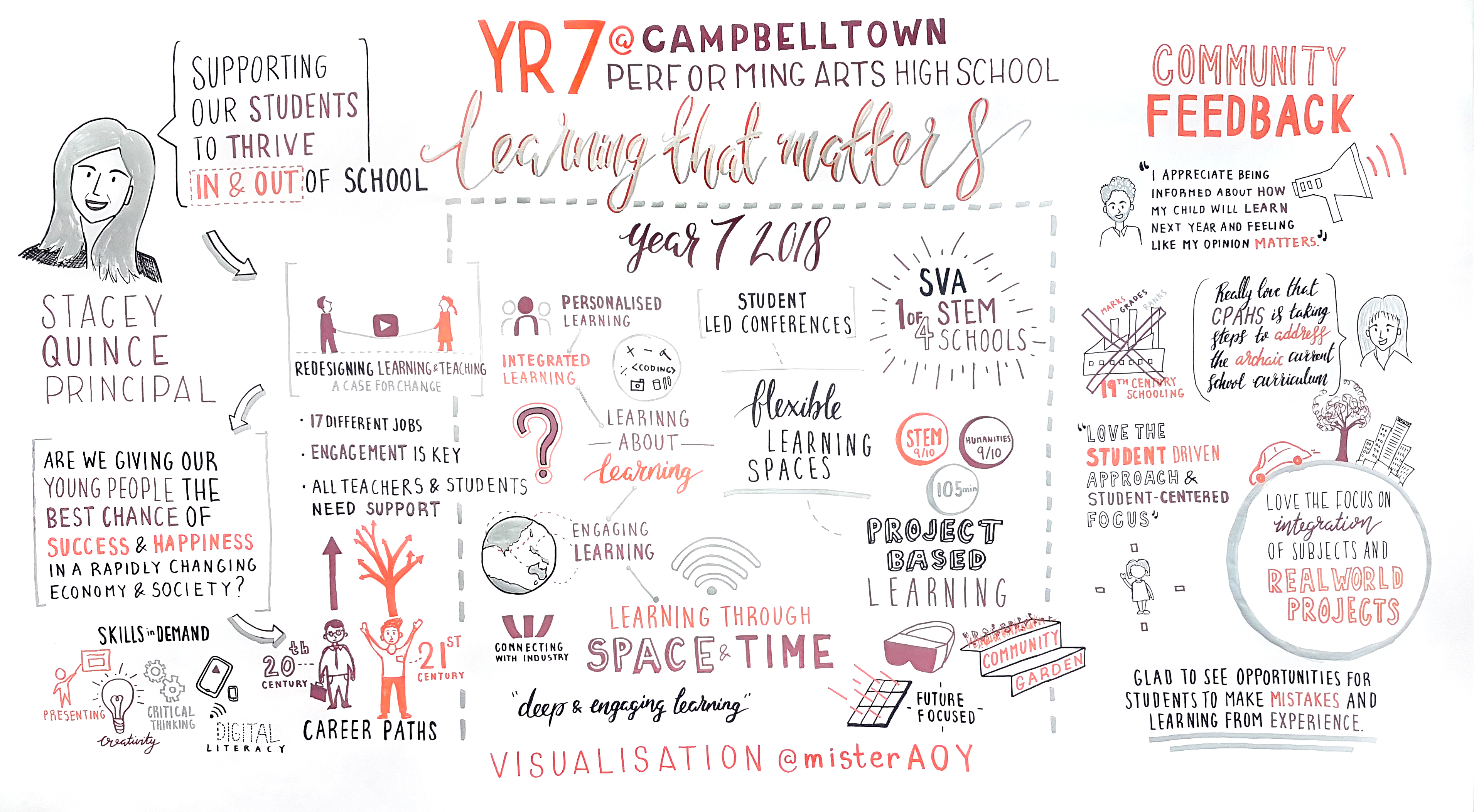Community consultation and engagement
At CPAHS, we have worked hard over a number of years to rethink learning experiences for our students. We have tried, evaluated and implemented new and emerging pedagogies; used design thinking processes to identify and prototype solutions to challenges before scaling them; developed a framework to embed skills into the curriculum in a more strategic way; worked hard at activating student agency; and really focused on how to build the capacity of teachers to create challenging and engaged learning through collaborative practice. But one of the most important changes we have made is in how we shape a learning partnership with our community.
Beyond sharing information to purposeful partnerships
In 2014, we wanted to change the direction of learning for our students at a whole school level. We had seen some gains in student learning as a result of ‘pockets of innovation’ but we wanted these successful practices to be more widespread. One of the challenges our teachers identified was “community perception” about what constitutes effective learning so we decided to engage our parents and community in a consultation process.
We worked with a consultation expert and invited our community in – parents, local businesses, service providers, staff from local schools – and used an adapted World Cafe protocol to present information, pose questions and capture parent feedback. Participants sat at small table groups, facilitated by trained teachers, and were asked to consider what they want for young people at school, what strategic directions the school could adopt to support these ideas and how we could build mutually beneficial partnerships with the community. The feedback we got was insightful, validating, challenging and very useful. We synthesised it, incorporated it into our planning and provided feedback to the community about how we used their input.
It marked the beginning of a new approach to partnerships with parents and our local community. We now run this process for lots of initiatives and have shared it with many schools. Our most recent consultation evening saw 250 people at 35 facilitated table groups discussing a new integrated curriculum for Year 7 and the input we received was outstanding. We also gather feedback through exit slips at exhibitions from 200-300 community members every term, run parent (and student and teacher) surveys for student-led conferences, and bring community experts into every project before gathering and applying their feedback.
Has it been difficult at times? Yes. Does it require a concerted and sustained effort? Yes. Has it been worth it? Absolutely!
Changing how we authentically partner with parents and the community – particularly in a secondary setting – can be challenging but there is no doubt, in our school’s experience at least, that it is a critical factor in enhancing learning for the benefit of all students.
Tips for building community partnerships:
- See parents and the community as a resource – there are many ways they can enhance learning for students!
- Remember that every parent wants the best education for their child but the landscape has changed from when they went to school – they may just need help understanding why and how.
- Be strategic and focused in the way you consult – be clear about what you want feedback on and structure the process to maximise input.
- Use the feedback you get and make sure the community knows how you have incorporated it.
- Stick with it – there is no doubt that it can be tricky to begin with but, over time, the partnerships become rich and rewarding.



